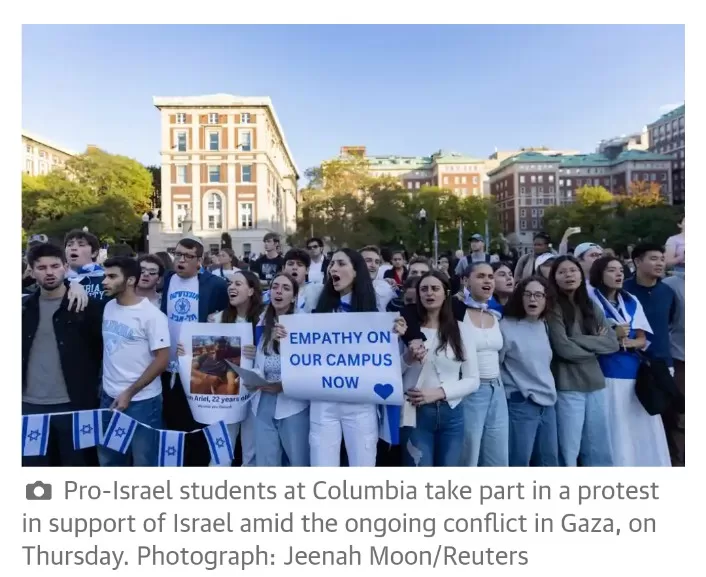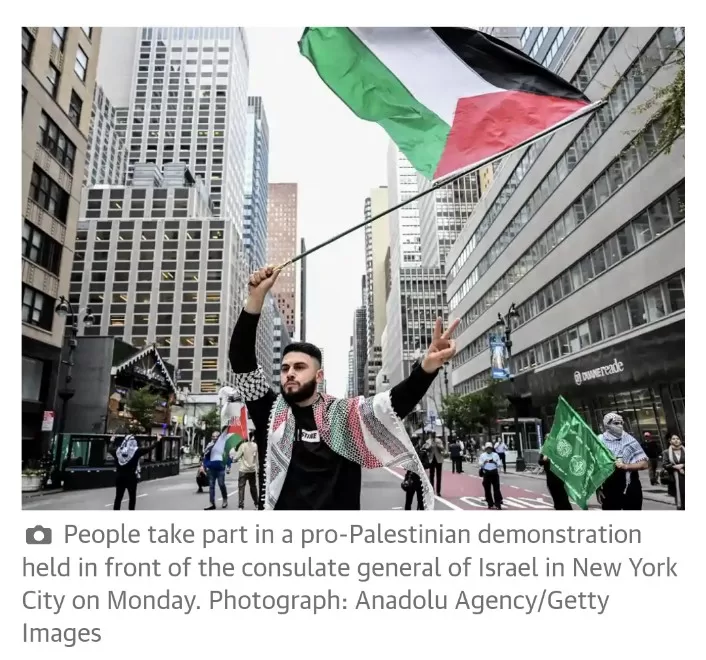In an atmosphere charged with tension and division, Columbia University bore witness to a gathering of demonstrators on the 12th of October, 2023, emblematic of the broader ideological rift plaguing American campuses. On one side of the divide, students draped in the blue and white of Israel held aloft images of those murdered and abducted, while across the way, a larger contingent chanted fervently for a “Free, free Palestine.”
This rift is deeply entrenched, as each side accuses the other of harboring a form of bloodlust, rooted in their deeply entrenched positions, which have only been exacerbated by the recent Hamas attack on Israeli communities and Israel’s ensuing military operations in Gaza.
Within the United States’ academic institutions, reactions to the deaths of over 1,300 Israelis and the abduction of more than 100 more have been marked by stark contrasts. Some have celebrated the Hamas assault as a legitimate act of resistance against occupation, while others have vehemently condemned it, stressing the importance of not ignoring the casualties of Palestinians in Israel’s retaliation on Gaza.
The rallies at Columbia formed part of a “day of resistance” orchestrated by the National Students for Justice in Palestine. This group lauded the Hamas attack as a “historic win for the Palestinian resistance.” Such sentiments were echoed by pro-Palestinian groups in other universities, leading students sympathetic to Israel to perceive these protests as a form of reveling in the loss of life.
In the heart of this tumultuous divide, a Jewish student raised a poignant sign reading, “Stop celebrating the raping, kidnapping, and slaughtering of our people,” while another student took a different approach by calling for “empathy on campus now.”
One student, who identified himself as Yoni, expressed his belief that the pro-Palestinian rally amounted to celebrating death. He questioned why, if there was a belief in the right to live, pro-Palestinian supporters did not join in mourning the deaths on both sides.
The Palestinian camp featured protesters with a different perspective. Darializa Avila Chevalier articulated her concerns about Israel’s potential retribution on ordinary Palestinians in Gaza, where hundreds, including many children, have fallen victim to Israeli airstrikes. She emphasized the importance of standing with the people of Gaza and highlighting their right to live in dignity, free from occupation and violence.
The divide present in American campuses extended to Harvard, where student organizations received criticism for blaming the Israeli regime entirely for the unfolding violence. This stance prompted criticism from figures like former Harvard President Lawrence Summers, who urged the university leadership to condemn this student statement more strongly and rebuke Hamas.
Amid the charged atmosphere at Columbia, some attempted to emphasize the suffering without justifying the attacks. Justin Onwenu, president of the Columbia law student senate, condemned Hamas’s attacks as “barbaric” but also called for efforts to promote peace and protect civilians.
Rachel Spiro, a Jewish student, noted the intense atmosphere on campus and mentioned that the Hamas attack and Israeli bombings dominated discussions in her international politics class. While conversations were respectful, the deep divide made it challenging to reach a consensus.
However, Spiro revealed that there were reasons for concern, particularly after a Jewish student was attacked for holding an Israeli flag in front of the library.
While some students chose to voice their opinions, others opted for anonymity due to fears of potential career repercussions. For example, a graduate student from Syria, who did not support Hamas attacks, stated that both parties bore responsibility for the terrorist attacks. He noted that he didn’t agree with Hamas’s tactics, but he also criticized Israel for its actions.
It is essential to recognize that this polarization has led to consequences beyond campus boundaries. Major law firms have rescinded job offers from students who expressed controversial opinions. Financial figures on Wall Street have publicly declared their reluctance to employ Harvard students who signed the statement blaming Israel for the Hamas attack.
This environment of fear and division has deterred some students from making public statements, even though they feel compelled to express their perspectives. One public health student, who initially shared her name but later requested anonymity, participated in the protests to counter what she perceived as the university’s biased stance in support of Israel, without acknowledging Palestinian lives lost.
This complex situation underscores the deep-seated tensions and stark divisions within American universities, where the Israel-Palestine conflict has become an intense and polarizing issue, affecting not only academic discourse but also the professional prospects of those involved.




